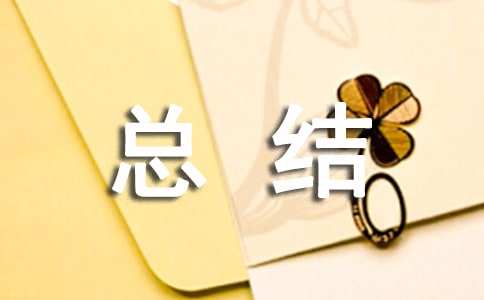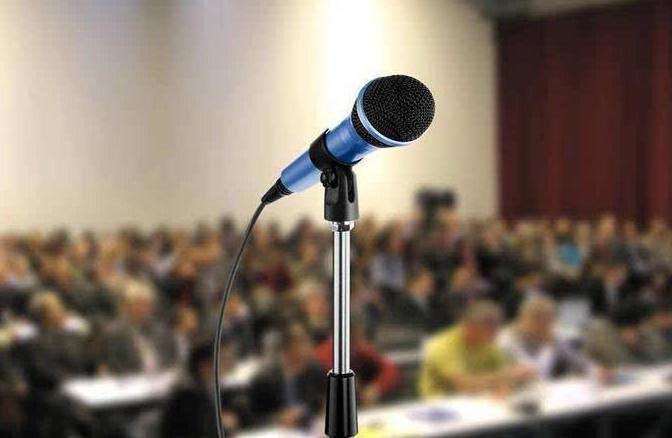下面是小编为大家整理的辽宁师大附中2021—2022学年下学期5月份模块考试高一英语试题及答案,供大家参考。

辽宁师大附中 2021—2022 学年下学期 5 月份模块考试 高一英语试题 (答案在最后)
考试时间:120 分钟
满分:150 分 第一部分:听力(共两节,满分 30 分)
第一节(每小题 1.5 分,满分 7.5 分)
听下面 5 段对话。每段对话后有一个小题,从题中所给的 A、B、C 三个选项中选出最佳选项,并标在试卷的相应位置。听完每段对话后,你都有 10 秒钟的时间来回答有关小题和阅读下一小题。每段对话仅读一遍。
1. What does John find difficult in learning German?
A. Pronunciation.
B. Vocabulary.
C. Grammar. 2. What is the probable relationship between the speakers?
A. Colleagues.
B. Brother and sister.
C. Teacher and student. 3. Where does the conversation probably take place?
A. In a bank.
B. At a ticket office.
C. On a train. 4. What are the speakers talking about?
A. A restaurant.
B. A street.
C. A dish. 5. What does the woman think of her interview?
A. It was tough.
B. It was interesting.
C. It was successful. 第二节(每小题 1.5 分,满分 22.5 分)
听第 6 段材料,回答第 6、7 题。
6. When will Judy go to a party?
A. On Monday.
B. On Tuesday.
C. On Wednesday. 7. What will Max do next?
A. Fly a kite.
B. Read a magazine.
C. Do his homework. 听第 7 段材料,回答第 8、9 题。
8. What does the man suggest doing at first?
A. Going to a concert.
B. Watching a movie.
C. Playing a computer game. 9. What do the speakers decide to do?
A. Visit Mike.
B. Go boating.
C. Take a walk. 听第 8 段材料,回答第 10 至 12 题。
10. Which color do cats see better than humans?
A. Red.
B. Green.
C. Blue. 11. Why do cats bring dead birds home? A. To eat them in a safe place. B. To show off their hunting skills. C. To make their owners happy. 12. How does the man sound at the end of the conversation?
A. Grateful.
B. Humorous.
C. Curious. 听第 9 段材料,回答第 13 至 16 题。
13. Who is Macy?
A. Ed’s mother.
B. Ed’s teacher.
C. Ed’s friend. 14. How does Ed usually go to kindergarten?
A. By car.
B. On foot.
C. By bus. 15. What does Ed enjoy doing at the kindergarten?
A. Telling stories.
B. Sing songs.
C. Playing with others. 16. What do the teachers say about Ed?
A. He’s clever.
B. He’s quiet.
C. He’s brave. 听第 10 段材料,回答第 17 至 20 题。
17. At what age did Emily start learning ballet?
A. Five.
B. Six.
C. Nine. 18. Why did Emily move to Toronto?
A. To work for a dance school.
B. To perform at a dance theater.
C. To learn contemporary dance. 19. Why did Emily quit dancing?
A. She was too old to dance.
B. She failed to get a scholarship.
C. She lost interest in it. 20. How does Emily feel about stopping training?
A. She’s pleased.
B. She’s regretful.
C. She’s upset. 第二部分 阅读 (共两节,满分 50 分)
第一节 (共 15 小题;每小题 2.5 分,满分 37.5 分)
A VOLUNTARY STUDENT ORGANIZATIONS There are over 600 different Voluntary Student Organizations (VSOs) at Stanford. VSOs are those organizations in which membership is both open and limited to current Stanford students, and whose purposes and procedures are consistent with the goals and standards of the University. Students make all organizational decisions. In order to use the Stanford name, or to receive funding, all voluntary student organizations must register with the University through the Office of Stanford Events. As a condition of registration, each voluntary student organization must file and have approved each of the following: · A statement (声明) of purpose and organizational constitution. · A statement about membership qualifications. · Clear procedures for officer elections. · Identification of the authorized representatives of the group. If a voluntary student organization seeks to use University facilities for meetings open to more than its own members, such meetings shall be subject to the regulations of the Committee on Public Events. All organization events held in University
facilities
must receive
event approval from the Office of Student Activities. No student group may use University space or facilities or receive other University support for purposes of supporting candidates for public office. Groups may use public places such as White Plaza for speeches and similar activities held by the Student Committee; may have periodic use of on-campus meeting rooms; and may request to reserve auditoriums (礼堂) for public events as long as all University guidelines are followed. 21. Who can register for a VSO at Stanford? A. A college student.
B. A voluntary student. C. A Stanford graduate.
D. A current Stanford student.
22. What material does a VSO need to hand in? A. A business certificate. B. A description of its members. C. A clear procedure of electing officers. D. An introduction to the representatives. 23. Which department can approve the events of a VSO? A. The Student Committee.
B. The Office of Student Activities.. C. The Office of Stanford Events
D. The Committee on Public Events. B Ask someone what they have done to help the environment recently and they will almost certainly mention recycling. Recycling in the home is very important of course. However, being forced to recycle often means we already have more material than we need. We are dealing with the results of that over-consumption in the greenest way possible, but it would be far better if we did not need to bring so much material home in the first place.
The total amount of packaging increased by 12% between 1999 and 2005. It now makes up a third of a typical household’s waste in the UK. In many supermarkets nowadays food items are packaged twice with plastic and cardboard. Too much packaging is doing serious damage to the environment. The UK, for example, is running out of areas for burying this unnecessary waste. If such packaging is burnt, it gives off greenhouse gases which go on to cause the greenhouse effect. Recycling helps, but the process itself uses energy. The solution is not to produce such items in the first place. Food waste is a serious problem, too. Too many supermarkets encourage customers to buy more than they need. However, a few of them are coming round to the idea that this cannot continue, encouraging customers to reuse their plastic bags, for example. But this is not just about supermarkets. It is about all of us. We have learned to associate packaging with quality. We have learned to think that something unpackaged is of poor quality. This is especially true of food. But it also applies to a wide range of consumer products, which often have far more packaging than necessary.
There are signs of hope. As more of us recycle, we are beginning to realize just how much unnecessary materials are collecting. We need to face the wastefulness of our consumer culture, but we have a mountain to climb. 24. What does the underlined phrase “over-consumption” refer to?
A. Using too much packaging.
B. Recycling too many wastes. C. Making more products than necessary.
D. Having more material than is needed. 25. The author uses figures in Paragraph 2 to show _______. A. the tendency of cutting household waste B. the increase of packaging recycling C. the rapid growth of super markets
D. the fact of packaging overuse 26. What can be inferred from Paragraph 4? A. Unpackaged products are of bad quality.
B. Supermarkets care more about packaging. C. It is improper to judge quality by packaging. D. Other products are better packaged than food. 27. What can we learn from the last paragraph?
A. Fighting wastefulness is difficult.
B. Needless material is mostly recycled. C. People like collecting recyclable waste.
D. The author is proud of their consumer culture. C As a high school student, I learned this the hard way last year, when a student I didn’t expect to bested me on the math PSAT. He soon admitted the secret to his success: the CAS calculator. He made clear that the CAS was able to solve all of his SAT equations(方程式). He claimed all he needed was his knowledge of seventh-grade math and the calculator did the rest. From experience, I know it isn’t that simple. A fancy calculator that costs about $150 is not that useful if you don’t understand what the question is asking. But it does feel like cheating. Aside from being financially out of reach of many students, CAS calculators have the potential to misrepresent math ability and problem-solving skills. It’s unfair to allow such an incredibly helpful advanced calculator unless every student has access to it. Especially when the test has the potential to affect a student’s educational path. In response to an email asking whether the College Board, which owns the SAT, is aware that the CAS is seen as greatly helping those who use it and whether it has considered banning such calculators, a communications officer sent a link to the SAT calculator policy, which spells out the permitted calculators, CAS among them. If all students had access to a better calculator, how many could improve their test scores enough to get into their dream school? How many students get into better schools because of this privilege hack? It isn’t right and shouldn’t stand. The simplest solution would be to leave out the math section that allows calculator use or permit test-takers to use only the most basic calculators, provided by the College Board. The equation(公式)
for fairness is simple: You know it when you see it, and this calculator inequity(不公) ,isn’t it. 28. The example of a student doing better than the writer in the math PSAT is used to _______. A. compare their math achievements
B. introduce the topic
C. show the writer’s envy D. blame his cheating in the exam 29.Why did the writer feel it unfair for students to use CAS calculators?
A. Because every student can not use one in SAT.
B. Because he didn’t use one as early as others.
C. Because his model was less powerful than others’.
D. Because the College Board didn’t provide one to him. 30.What’s the College Board’s attitude towards banning the CAS calculators? A. Favorable. B. Disagreeing. C. Uncertain. D. Cautious. 31. What’s the best title of the passage? A. CAS calculato...



